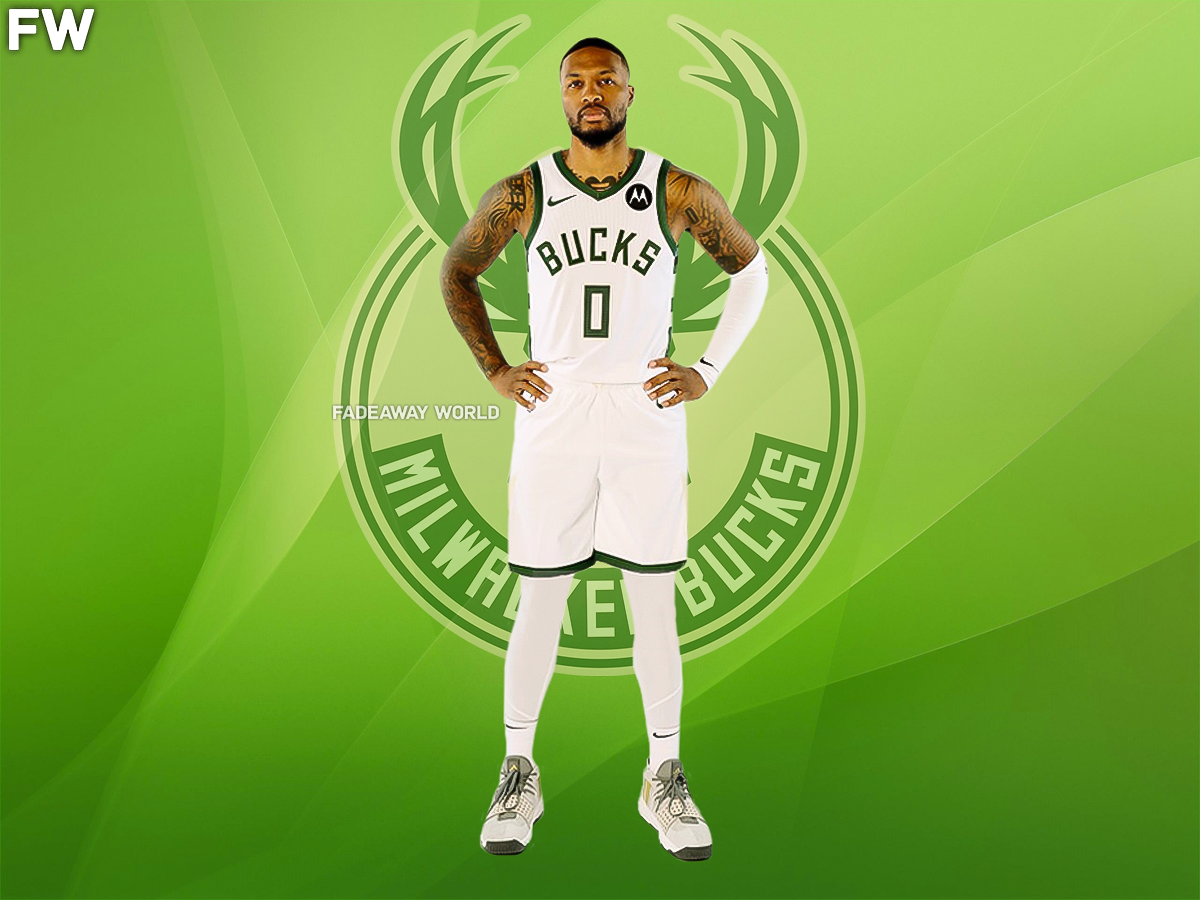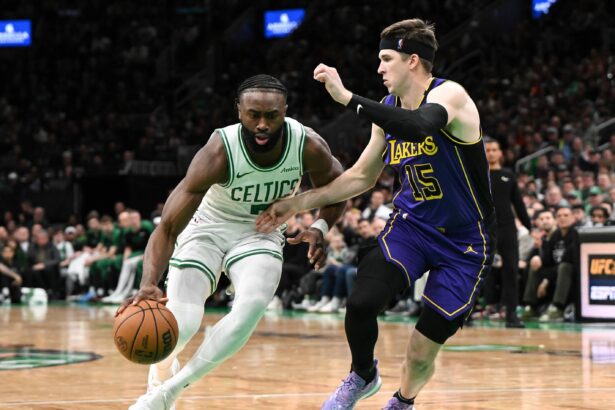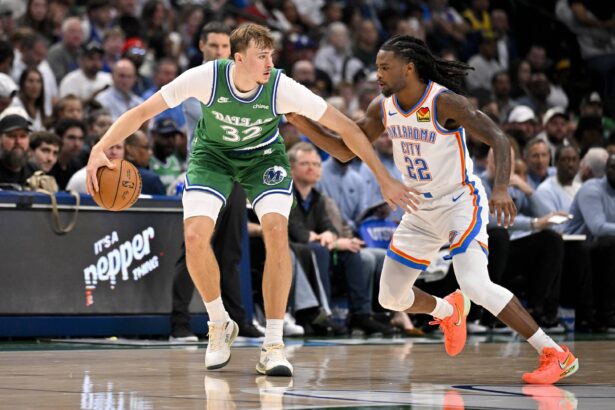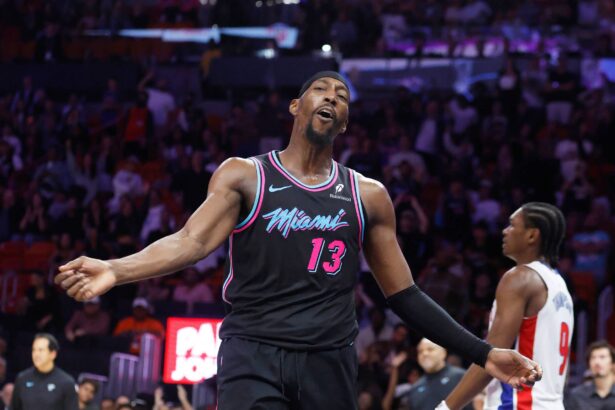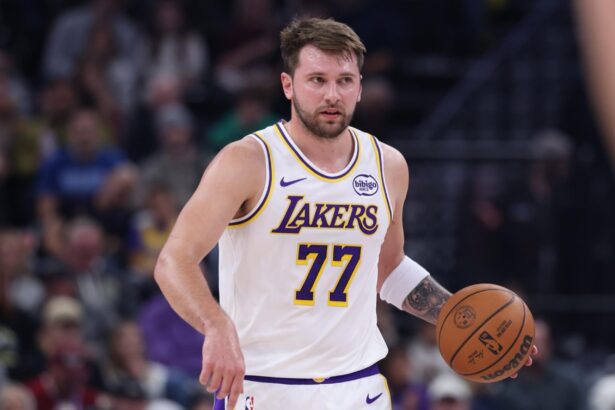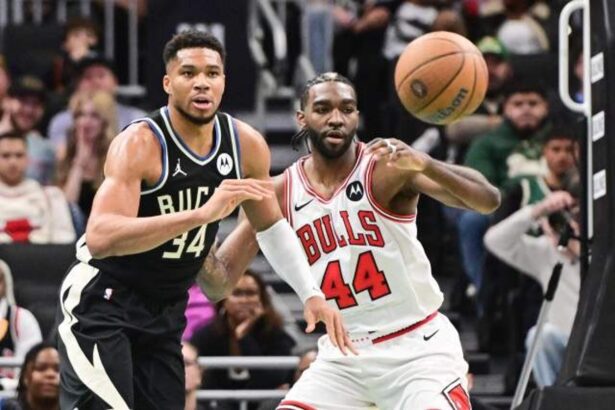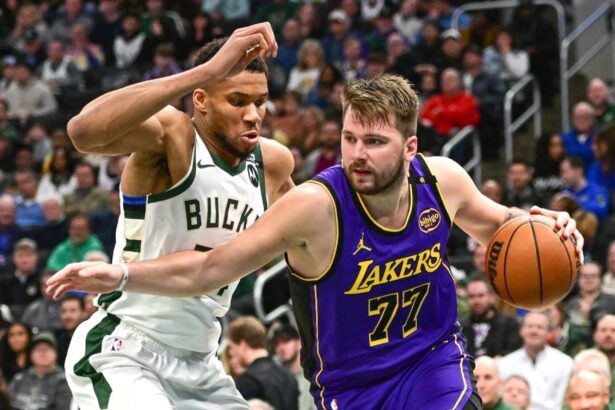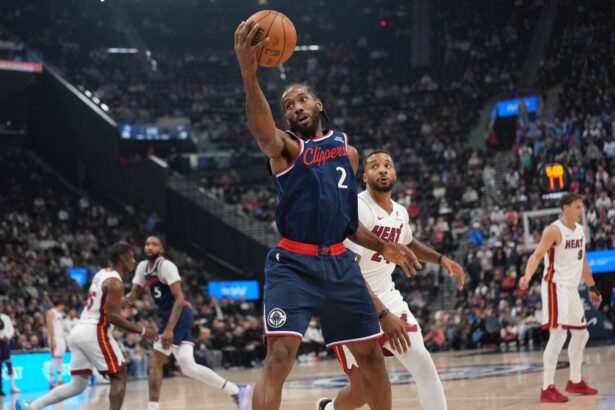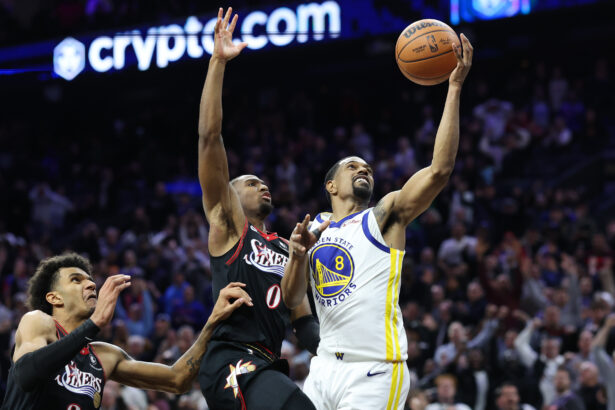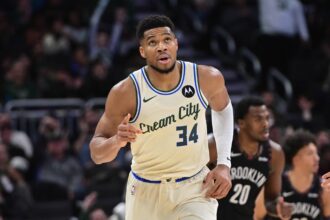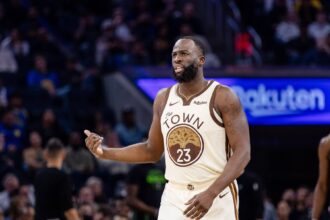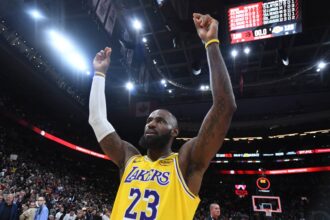The Milwaukee Bucks entered the current NBA season with high expectations after acquiring Damian Lillard from the Portland Trail Blazers in exchange for Jrue Holiday. The move aimed to pair Lillard with Giannis Antetokounmpo, forming a formidable duo. However, early into the season, the Bucks find themselves grappling with defensive issues, raising concerns about the effectiveness of this new partnership.
The Bucks Are Below Expectations At The Early Stage Of The Season
The Milwaukee Bucks’ journey in the current NBA season has been characterized by a blend of successes and notable setbacks. With a current record of 5-4, the team occupies the 7th seed in the Eastern Conference. Despite the individual brilliance of Giannis Antetokounmpo, as evidenced by his astounding 54-point performance against the Indiana Pacers, and a commendable 35 points against the Orlando Magic, the team has found itself on the wrong side of the win-loss column in the past two outings.
The losses to the Pacers and the Magic not only highlight the individual brilliance of Giannis but also underscore the team’s struggles to secure victories even when key players deliver exceptional performances. This raises questions about the overall cohesion and effectiveness of the team, particularly in crucial moments that demand collective defensive efforts.
A closer examination of the Bucks’ overall defensive rating reveals a cause for concern, as the team currently sits at #26 in the league. This defensive metric reflects the team’s challenges in preventing opponents from scoring efficiently. The departure of defensive stalwart Jrue Holiday, coupled with the integration of Damian Lillard, has seemingly created defensive vulnerabilities that opponents are capitalizing on.
Is Damian Lillard The Problem On This Team?
Damian Lillard’s reputation as an offensive juggernaut has often overshadowed his defensive contributions, and early-season statistics shed light on the challenges he faces on that end of the court. Lillard’s defensive rating of 119.2 places him at the lower echelon of starting point guards in the league, only better than Spencer Dinwiddie, Tyus Jones, and Terry Rozier. This is a big concern for a team with aspirations of championship contention.
When comparing Defensive Win Shares, Lillard’s .053 pales compared to defensive standouts like Anthony Edwards, who leads the league with a robust .250. This stark difference emphasizes the disparity in impact between Lillard and some of the premier defenders in the league, and how little he is helping his new team on the defensive side of the court.
Breaking down Lillard’s individual defensive performance reveals alarming numbers. Allowing opponents to shoot at a rate of 46.8% when he is the primary defender indicates a vulnerability that opponents have exploited. This places Lillard as the fourth-worst perimeter defender on the team, trailing behind Pat Connaughton, MarJon Beauchamp, and Cam Payne as the point-of-attack defender.
The struggles extend to pick-and-roll situations, a staple in modern NBA offenses. Lillard allows a concerning 55.9% field goal percentage to the ball handler, marking him as the third-worst on the team in this regard. This weakness in pick-and-roll defense contributes to the team’s overall defensive woes, as opponents find success exploiting this particular facet of the game.
These statistics underscore a crucial aspect of Lillard’s game that needs improvement. While he is renowned for his offensive heroics, a more well-rounded contribution on the defensive end is essential, especially given the departure of defensive anchor Jrue Holiday in the offseason trade.
The defensive concerns plaguing the Milwaukee Bucks extend beyond the backcourt, infiltrating the frontcourt as well. One notable player grappling with defensive assignments is Malik Beasley, whose struggles are evident in a defensive rating of 119.6. This metric, coupled with a net rating of -12.6, paints a picture of opponents capitalizing on defensive lapses whenever Beasley is on the court. This raises questions about his defensive contributions and the need for improvement in his ability to thwart opposing offenses.
Before the start of the season, Adrian Griffin Jr., the Head Coach for the Milwaukee Bucks, said that Beasley would be in charge of taking the toughest matchup every night but judging by his numbers he’s not been doing it at a high level, which was expected due to his scoring minded game.
How Perimeter Defense Is Leaving The Bucks Exposed Inside
Adding to the defensive conundrum is the challenge faced by Brook Lopez. With a net rating of -13.4, Lopez’s defensive struggles contribute significantly to the team’s overall woes. His defensive rating of 116.2, while not the worst on the team, suggests opponents find success when attacking the paint, pointing to a broader issue in the Bucks’ ability to protect both the perimeter and the interior effectively.
Obviously, that is not entirely Lopez’s fault, when he’s shown over the last several seasons that he is more than a capable interior defender and could’ve won at least one Defensive Player Of The Year Award. But the defensive tasks that the Bucks are making Lopez do with so much helping on drives and closeouts to the 3-point line usually leave the paint wide open.
The defensive challenges for the Milwaukee Bucks become particularly evident when examining the roles of key players like Lopez and Giannis. In pick-and-roll situations, these two formidable defenders often find themselves drawn away from their natural habitat—the paint—to contest perimeter shots. This strategic shift is a consequence of the Bucks’ defensive approach, characterized by “drop” coverage, but the unintended repercussions have become increasingly apparent.
The defensive strategy of “drop” coverage, which involves the primary defender sagging back to protect the rim, has been a staple for the Bucks. However, the effectiveness of this strategy is contingent on having strong on-ball defenders, a quality the Bucks currently lack. This deficiency manifests in the team ranking as the fifth-worst in the league in allowing pull-up mid-range shots. The absence of adept on-ball defenders compromises the execution of the drop coverage, enabling opponents to exploit openings and capitalize on mid-range opportunities.
The Bucks, once lauded as a defensive powerhouse, have witnessed a noticeable decline in their defensive prowess. A stark illustration of this regression is their current 11th-place ranking in points allowed in the paint. This marks a considerable departure from their consistent fourth-place ranking in the same category over the previous three years.
Not Even The Offense Is Elite For The Bucks Right Now
As the Milwaukee Bucks grapple with defensive woes, a contrasting narrative emerges on the offensive front, revealing a team that, despite its offensive potential, has yet to fully unleash its scoring capabilities. Currently ranked 13th in the NBA in Offensive Rating, the Bucks’ offensive performance raises intriguing questions about the synergy between their offensive strategies, the integration of Damian Lillard, and the persistent challenges on the defensive end.
The offensive narrative becomes more complex when examining Lillard’s individual impact. Despite being a prolific scorer and playmaker, Lillard’s offensive output hasn’t reached its zenith, creating a dynamic where the Bucks find themselves striving for offensive consistency despite the star guard’s contributions. This raises the question of whether Lillard’s full offensive potential is yet to be realized within the team’s system.
When Lillard shares the court with key offensive assets like Middleton and Antetokounmpo, the Bucks boast an impressive offensive rating of 117.2. However, a closer look at Lillard’s on/off court impact reveals a surprising trend. With Lillard on the bench, the Bucks exhibit a superior offensive rating, registering a -8.9 on/off court net rating. This unexpected dynamic prompts scrutiny of the team’s offensive efficiency and the intricate balance needed to optimize Lillard’s presence on the court.
Delving into the lineup compositions further exposes the complexity of the offensive challenge. The starting lineup featuring Lillard, Beasley, Middleton, Giannis, and Lopez exhibits a modest Offensive Rating of 102.2. However, this lineup struggles defensively, with a Defensive Rating of 107.7, resulting in a negative Net Rating of -5.5. This imbalance underscores the delicate equilibrium the Bucks must find to marry offensive productivity with defensive stability.
While there appears to be a glimpse of promise with a potential optimal lineup featuring Lillard, Middleton, Crowder, Giannis, and Lopez, the limited sample size of only two games featuring this configuration due to player absences clouds its reliability as a definitive solution.
In essence, the Bucks’ offensive narrative is a tale of untapped potential, intricate lineup dynamics, and the quest for equilibrium between offensive brilliance and defensive stability. As the season unfolds, the team faces the challenge of honing its offensive identity to complement the star power of Lillard while navigating the complexities posed by their defensive struggles.
What Can The Bucks Do To Improve This Situation?
The impending trade deadline presents a golden opportunity for the Bucks to bolster their defensive arsenal. Exploring trades, particularly for elite defenders like Matisse Thybulle, could provide a transformative solution. Thybulle’s ability to serve as the primary defender against opposing superstars could alleviate defensive burdens on key players, filling a crucial void left by the departure of Jrue Holiday.
Maximizing the offensive potential of Damian Lillard and Giannis Antetokounmpo requires a reevaluation of their on-court interactions. Implementing a higher frequency of pick-and-roll plays between Lillard and Giannis, while strategically positioning Middleton as a corner shooter, creates a dynamic offensive trio. This tactical adjustment not only capitalizes on Giannis’ athleticism in the roll but also exploits Middleton’s sharpshooting capabilities when defenders collapse on the Greek Freak.
A shift in defensive strategies is imperative to shore up the Bucks’ vulnerabilities. Consideration should be given to adopting a more versatile defense, such as a switch-heavy approach among perimeter players. This strategy minimizes mismatches and disrupts opponents’ offensive flow. Alternatively, incorporating a hard hedge in pick-and-roll situations, particularly with interior defenders, could provide cover for Lillard and Beasley, mitigating their one-on-one defensive challenges and preserving energy for offensive contributions.
In essence, the Bucks must aim to improve on both ends of the court. Acquiring a defensive specialist, restructuring offensive plays, and evolving defensive schemes collectively form a comprehensive blueprint for a more formidable and well-rounded Milwaukee Bucks team. As the season progresses, the team’s aspirations for success will grow in the highly competitive landscape of the NBA.

